 |
 |
Our enthusiastic and extremely knowledgeable perennials team is here to answer your questions and help you choose the best perennials for your situation. There’s always something in bloom for sun, shade, butterflies, birds or deer resistance as well as a variety of bulbs for your space.
Stroll through our time-tested favorites and introduce yourself to the newest varieties. We garden with perennials too; we love them and it shows!
|
88 found, showing page 3 of 6
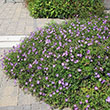
Violet blue flowers. Very beautiful groundcover, border plant or along a walkway. Tolerant of heat and humidity. USDA 5-8

Attractive verigated grass-like foliage and large, spectacular pale blue blooms. USDA 4-9
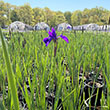
Purple flowers bloom above the narrow green leaves. Naturalizing. USDA 3-8
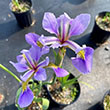
Purple-blue blooms. Tolerates standing water. Native. USDA 3-9
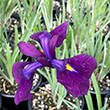
Purple blooms. Variegated foliage. Tolerates wet conditions. USDA 4-9
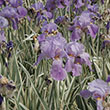
Pale blue blooms. Fragrant. Cream & green variegated foliage. USDA 4-9
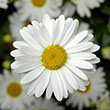
Height: 20 inches
Spacing: 18 inches
Sunlight: full sun, partial shade
Hardiness Zone: 4b
Group/Class: Western Star Series
Brand: Syngenta
Description:
An exceptional series noted for superior habits and flowering; a beautiful addition to the garden when massed; blooms throughout the summer
Ornamental Features:
Western Star Taurus Shasta Daisy has masses of beautiful white daisy flowers with gold eyes at the ends of the stems from mid spring to mid summer, which are most effective when planted in groupings. The flowers are excellent for cutting. Its serrated narrow leaves remain dark green in color throughout the season.
Landscape Attributes:
Western Star Taurus Shasta Daisy is an herbaceous perennial with an upright spreading habit of growth. Its medium texture blends into the garden, but can always be balanced by a couple of finer or coarser plants for an effective composition.
This plant will require occasional maintenance and upkeep. Trim off the flower heads after they fade and die to encourage more blooms late into the season. It is a good choice for attracting butterflies to your yard. Gardeners should be aware of the following characteristic(s) that may warrant special consideration:
- Insects
Western Star Taurus Shasta Daisy is recommended for the following landscape applications:
- Mass Planting
- Border Edging
- General Garden Use
- Container Planting
Planting & Growing:
Western Star Taurus Shasta Daisy will grow to be about 16 inches tall at maturity, with a spread of 20 inches. When grown in masses or used as a bedding plant, individual plants should be spaced approximately 18 inches apart. It grows at a fast rate, and under ideal conditions can be expected to live for approximately 5 years. As an herbaceous perennial, this plant will usually die back to the crown each winter, and will regrow from the base each spring. Be careful not to disturb the crown in late winter when it may not be readily seen!
This plant does best in full sun to partial shade. It does best in average to evenly moist conditions, but will not tolerate standing water. It is not particular as to soil type or pH. It is highly tolerant of urban pollution and will even thrive in inner city environments. This particular variety is an interspecific hybrid. It can be propagated by division; however, as a cultivated variety, be aware that it may be subject to certain restrictions or prohibitions on propagation.
Western Star Taurus Shasta Daisy is a fine choice for the garden, but it is also a good selection for planting in outdoor pots and containers. With its upright habit of growth, it is best suited for use as a 'thriller' in the 'spiller-thriller-filler' container combination; plant it near the center of the pot, surrounded by smaller plants and those that spill over the edges. Note that when growing plants in outdoor containers and baskets, they may require more frequent waterings than they would in the yard or garden.

Vibrant blue blooms. Compact, clumping foliage. USDA 4-9
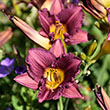
Ruffled purple blooms with yellow throats. Rebloomer. USDA 3-9
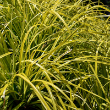
Height: 16 inches
Spread: 16 inches
Sunlight: full sun, partial shade, full shade
Hardiness Zone: 4b
Other Names: C. hachijoensis
Group/Class: EverColor Series
Description:
A vigorous, mound forming evergreen plant with striking lime green emerging foliage that matures to yellow-gold; makes quite a statement as a container plant, an accent in the border, or as a mass groundcover
Ornamental Features:
EverColor Everillo Japanese Sedge is primarily valued in the garden for its cascading habit of growth. Its attractive grassy leaves emerge lime green in spring, turning yellow in color. The foliage often turns gold in fall.
Landscape Attributes:
EverColor Everillo Japanese Sedge is an herbaceous evergreen perennial grass with a shapely form and gracefully arching stems. It brings an extremely fine and delicate texture to the garden composition and should be used to full effect.
This is a relatively low maintenance plant, and is best cleaned up in early spring before it resumes active growth for the season. It has no significant negative characteristics.
EverColor Everillo Japanese Sedge is recommended for the following landscape applications:
- Mass Planting
- Border Edging
- General Garden Use
- Groundcover
- Naturalizing And Woodland Gardens
- Container Planting
Planting & Growing:
EverColor Everillo Japanese Sedge will grow to be about 16 inches tall at maturity, with a spread of 16 inches. Its foliage tends to remain dense right to the ground, not requiring facer plants in front. It grows at a medium rate, and under ideal conditions can be expected to live for approximately 10 years. As an evegreen perennial, this plant will typically keep its form and foliage year-round.
This plant performs well in both full sun and full shade. It prefers to grow in average to moist conditions, and shouldn't be allowed to dry out. It is not particular as to soil type or pH. It is somewhat tolerant of urban pollution. Consider applying a thick mulch around the root zone in both summer and winter to conserve soil moisture and protect it in exposed locations or colder microclimates. This is a selected variety of a species not originally from North America. It can be propagated by division; however, as a cultivated variety, be aware that it may be subject to certain restrictions or prohibitions on propagation.
EverColor Everillo Japanese Sedge is a fine choice for the garden, but it is also a good selection for planting in outdoor pots and containers. It is often used as a 'filler' in the 'spiller-thriller-filler' container combination, providing a canvas of foliage against which the thriller plants stand out. Note that when growing plants in outdoor containers and baskets, they may require more frequent waterings than they would in the yard or garden.
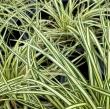
'Evergold' Japanese Sedge | Bright creamy yellow-striped, narrow leaves makes this a wonderful accent. Variegated. Evergreen. Tolerates moist soils. Naturalizing. USDA 5-9

Heat and humidity tolerant, mounding habit, and periwinkle blue blooms appearing late spring. Near-Black Stems. USDA 4-9
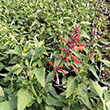
Fragrant mounding foliage with coral-pink flowers. Long bloomer. Heat & humidity tolerant. USDA 5-10
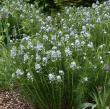
Long-lived plant with clusters of blue flowers in May and June and golden fall color on an upright, bushy plant. USDA 5-8
88 found, showing page 3 of 6













